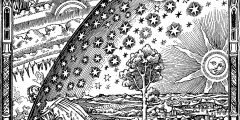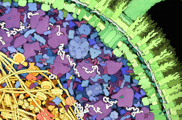Gnomes, ichthyosaurs and 19th-century science communication
January 14, 2022
Last weekend I had an interaction on Twitter that got me away from doomscrolling and transported me back to my safe place, namely the 19th century. In my past life, when I was very young, I wrote a Staatsexamensarbeit, a sort of MA for people on the teacher training track (I never went to the …
Francis Willughby and me
November 26, 2021
You have probably all heard of Newton or Halley or Hooke or Pepys … But have you heard of Willughby? I had, vaguely, but I did not look hard enough. They were all early members of the Royal Society (founded in 1660) and involved in a little scandal to which I’ll come later. But first …
Epi-pins: Epigenetics on Pinterest
August 23, 2019
This post has been co-authored with Cath Ennis, University of British Colombia, Vancouver (author of Epigenetics: A Graphic Guide). Cath is a Knowledge Translation Specialist with the University of British Columbia’s Human Early Learning Partnership and the Kobor Lab at BC Children’s Hospital Research Institute. *** Cath and I are interested in how epigenetics is …
The microbiome: Images and visualisations
June 30, 2017
On Monday 26 June I went to Oxford to participate in a workshop on the microbiome organised by The Oxford Interdisciplinary Microbiome Project (IMP). This was what one might call a meta-workshop. Its aim was to find questions that social scientists can sensibly ask about the microbiome, or in the words of the organisers, this …
The mystery of the missing Martians
January 13, 2017
When the present is depressing and the future uncertain, it is sometimes nice to retreat to the past, especially to past futures. I recently tried to distract myself from the present by staring at Venus, Moon and Mars illuminating the evening sky. I then led my eyes wander around the internet and I inadvertently came …
Camille Flammarion: Making science popular
July 22, 2016
Life on this planet is currently crazy, chaotic and confusing. In this context, I was thinking – wouldn’t it be nice to be able to poke one’s head out of the earthly firmament and look at the heavens beyond. This thought popped into my head because I had once seen an image depicting something like …
Images of the cell in art and science: An update
May 7, 2015
This is a Guest POST by Maura C. Flannery, Professor of Biology, St. John’s University, NY, reflecting on, what one may call ‘making cells public’ and the interactions between art and science in this process. The blog is related to an images and visualisation project funded by the European Science Foundation, rather than to the …
Nanoscience, images and technologies of visualisation: A space odyssey
January 22, 2015
This blog post is a story about an intellectual and collaborative adventure that should be all too familiar to academics. However, opportunities for such adventures may sadly be disappearing in an era of impact driven research. It is a story of how enthusiasm, curiosity, serendipity and collaboration can lead to unexpected and joyous outcomes. At …
Making science picturesque
October 24, 2014
I was idly browsing io9 the other day and read a fascinating article on comets in the history of art. This would be a nice topic for another blog post… but that’s not what this post is about. When looking at these delightful pictures, my eyes fell on “an engraving from Le Magasin Pittoresque, a …
Jules Verne: Making science visual
December 30, 2013
On Christmas Eve I had a chance encounter on twitter and the result is this blog post, or rather: essay. Richard Ashcroft had retweeted a tweet about a book by Adam Roberts. The tweet by Adam Roberts said: “Finished copies came by this morning’s post. Very lovely piece of book making!” The book retells Jules …










